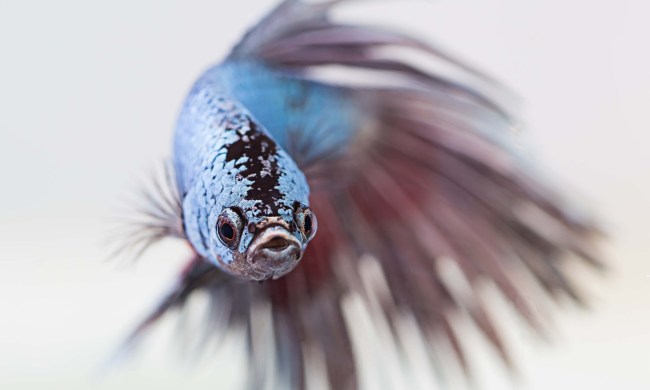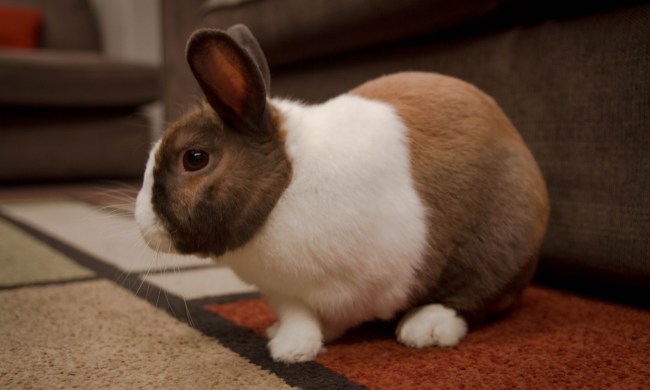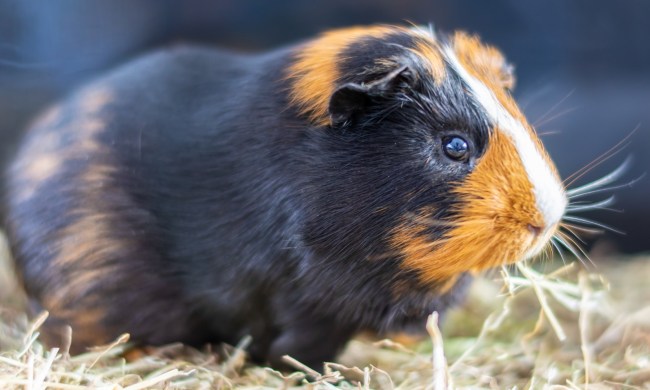If there’s one thing we know about guinea pigs, it’s that they love to eat. And these little porkers will go to town on both dinner and treats alike. Before you purchase nourishment for your pet, remember that your rodent is an herbivore and needs a bit of plant-based variety in his diet. Try these snacks in addition to guinea pig staples to keep your plump friend well-fed and happy.
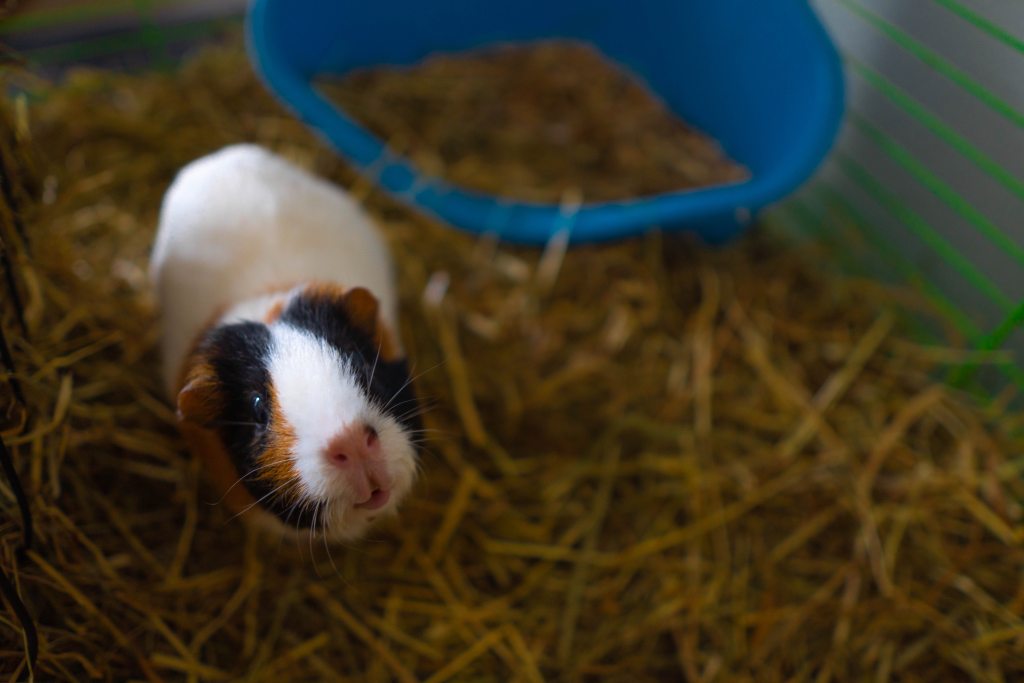
What can I feed my guinea pig?
A guinea pig’s diet mainly consists of two dietary options:
- Hay
- Pellets
For the most part, your pet will want to eat hay. It may not look terribly appetizing to you, but it’s full of the fiber and nutrients guinea pigs need to thrive. You’ll have to keep him well-stocked in this grassy meal since he’ll want to munch all day long. In addition to helping him stay full, it’ll keep his teeth from growing too long, which can cause infection.
The next largest portion of his diet will need to be pellets manufactured specifically for your pet. By giving him this food, you can rest assured that he’s getting all the nutrients he needs as it’s filled with exactly the right vitamins. Be forewarned, your guinea is called a pig for a reason: He will overeat if given the chance. Find the right balance between keeping a good supply in his cage and letting him munch away too long.
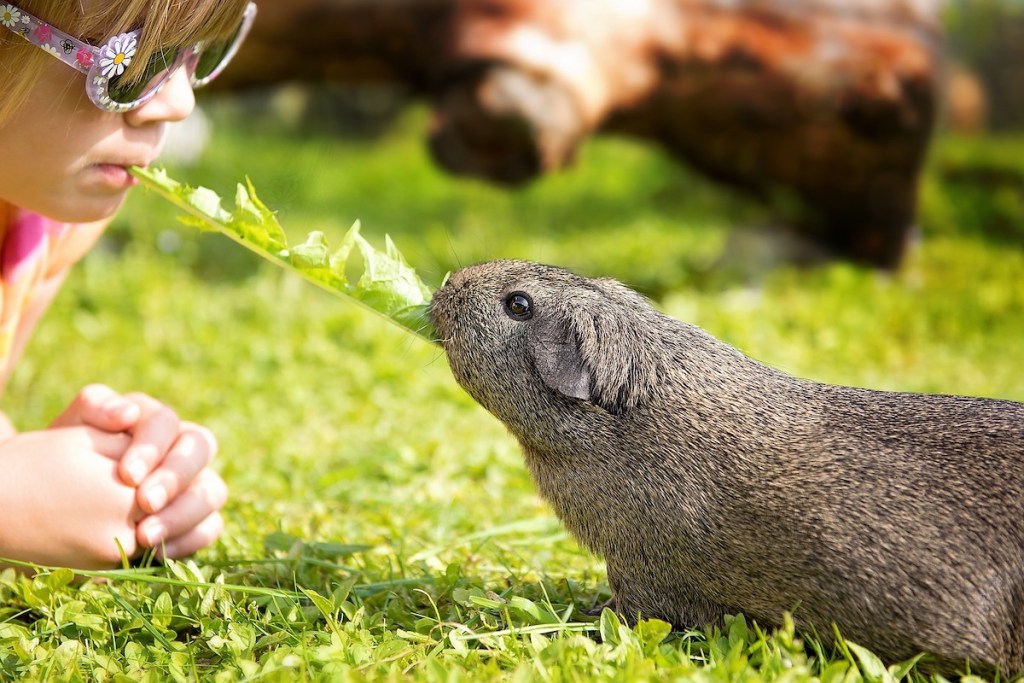
Can my guinea pig eat human food?
Guinea pigs like all different kinds of plants, so you can feed him your meal if you carefully select treats from your pantry. Many fruits and veggies will certainly make it onto your guinea pig’s safe-food list. Plus, giving him special treats will enrich your pet’s diet and keep him happy.
Try offering him a nibble of a carrot, a romaine leaf, or a broccoli stem, as these will make a good starter pack. If he gobbles them up, choose some more adventurous foods like artichokes and kiwi fruit. Other options might include cucumbers or peas — most green veggies are a safe bet. He’ll surely let you know which ones are his favorites.
Which foods should I avoid?
Since he’s a plant-only eater, you need to stay away from things like meat and dairy. Other foods you should avoid include:
- Nuts
- Mushrooms
- Garlic
- Iceberg lettuce
While iceberg lettuce is quite similar to okay foods like spinach, these leaves contain too much water and virtually no nutrients.
Remember to keep fruits, even the good ones, to a minimum since they include quite a bit of sugar. Otherwise, he’ll pack on the pounds, and you’ll have to put him on a pet diet. Also, guinea pigs (like pirates) often get scurvy. You’ll have to be extra sure he’s ingesting enough vitamin C in his diet, from his treats or his pellets. Use this as an excuse to give him a nice slice of orange.
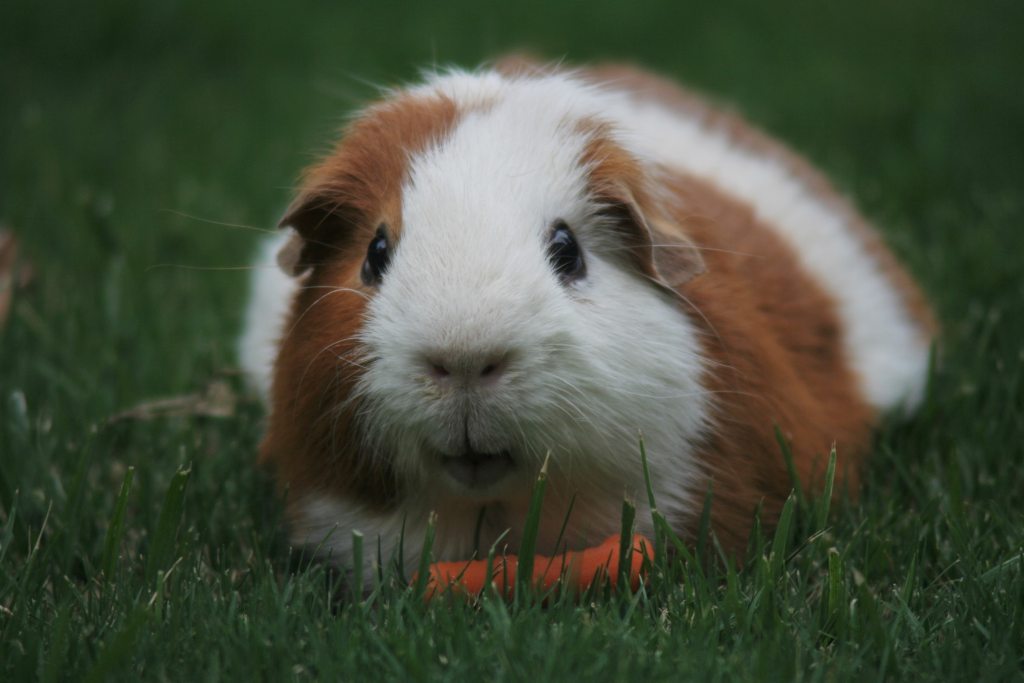
How should I feed my guinea pig?
He’ll be happiest if you keep his pile of hay going at basically all hours. Give him only a little bit of alfalfa hay with timothy and orchard as the main course. Additionally, you’ll want to mix in those pellets (ones that were specifically designed for guinea pigs) every day. Treats should be included only occasionally as less than 10% of total food intake. Remember, you don’t want him to overindulge too much. Keep leafy greens around, though, to break up the hay monotony. Replace leftover food daily as it won’t keep long in the enclosure, and spoiled or rotting fare will make your animal sick.
When it comes to your pet guinea pig, you’ll predominantly want to stick to his main food groups: hay, pellets, and greens. Experiment with the more obscure treats and see what he likes. Maybe he’s a berry guy, or perhaps he prefers to nibble on fruit from the citrus family. Introduce new foods slowly, one at a time, and don’t worry if he rejects your fave snack (you probably wouldn’t like his hay, either). Pay close attention to his weight and his nutrient intake, adding supplements or cutting down on sugary morsels if necessary. Check with your vet if you’re ever not sure about a new food or think something might have upset his tummy.
